| Srl | Item |
| 1 |
ID:
106430
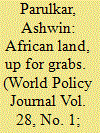

|
|
|
|
|
| Publication |
2011.
|
| Summary/Abstract |
Sheikh Mohammed Hussein Ali Al Amoudi, a citizen of Saudi Arabia, spends his time shuttling between Riyadh and Ethiopia, where he was born in a village 64 years ago. The son of a Yemeni father and Ethiopian mother, Al Amoudi boasts an estimated net worth of $10 billion. He is the richest Ethiopian and, according to Forbes, the 64th richest man in the world. Forty-five years ago, he emigrated to Saudi Arabia and built his fortune in oil refineries and the booming construction industry.
|
|
|
|
|
|
|
|
|
|
|
|
|
|
|
|
| 2 |
ID:
175114
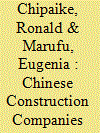

|
|
|
|
|
| Summary/Abstract |
This paper focuses on the question of labour rights in Chinese construction companies in Zimbabwe. Utilizing data collected from two companies through interviews with mainly artisans, the study established general discontentment with conditions of work in these companies by local workers. Concerns were raised over lack of adequate protective equipment/clothing, low salaries and poor communication systems among others. The government of Zimbabwe was urged (by respondents) to monitor the operations of Chinese companies in the sector and ensure that they follow the law in letter and spirit. The study established that Chinese business people exploit opportunities presented by high rates of unemployment in the country as well as Zimbabwe’s desperation as an internationally isolated state to their advantage. In such a situation, trade unions become the gap filler to improve the workers’ plight although the absence of total state support for them leaves workers exposed.
|
|
|
|
|
|
|
|
|
|
|
|
|
|
|
|
| 3 |
ID:
193007
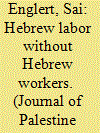

|
|
|
|
|
| Summary/Abstract |
The Histadrut was founded in 1920 to organize the so-called Zionist conquest of labor, which aimed to exclude Palestinian workers from the economy. While this ideology was central to the Yishuv, labor shortages and settler-colonial expansion following the establishment of the State of Israel in 1948 led to the integration of Palestinian workers in the workforce. Focusing on the construction industry, this article explores the ways in which the Histadrut’s contemporary membership structure, collective agreements, and relationship to the Israeli state serve to further institutionalize a highly racialized and segregated sector. Palestinian and migrant construction workers toil in dangerous circumstances for low pay, without union protection, and under the supervision of unionized Jewish managers and engineers.
|
|
|
|
|
|
|
|
|
|
|
|
|
|
|
|
| 4 |
ID:
150447
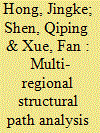

|
|
|
|
|
| Summary/Abstract |
The construction industry in China exerts significant environmental impacts and uses considerable resources because of rapid urbanization. This study conducted a structural path analysis (SPA) based on the multi-regional input–output table to quantify environmental impact transmission in the entire supply chain. Results indicated that the direct resource input (the first stage) along with on-site construction (the zeroth stage) consumed the highest amount of energy in the supply chain and accounted for approximately 50% of total energy consumption. Regional analysis showed that energy consumption in the construction industry at the provincial level was self-sufficient. Sectoral analysis demonstrated that the direct inputs from the sectors of “manufacture of non-metallic mineral products” and “smelting and pressing of metals” generated the most important energy flows, whereas the sectors of “production and distribution of electric power and heat power” and “extraction of petroleum and natural gas” significantly but indirectly influenced energy use. Sensitivity analysis exhibited that the system boundary of SPA could be narrowed down into the first two upstream stages that contained nearly 50% of energy flow information or expanded toward the first five upstream stages that represented 80% of total energy consumption.
|
|
|
|
|
|
|
|
|
|
|
|
|
|
|
|
| 5 |
ID:
191701
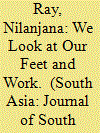

|
|
|
|
|
| Summary/Abstract |
This is a case study of women workers in the informal construction sector who commute daily to the city of Kolkata in eastern India. While existing studies of women construction workers have considered their worker identity as primary, this study offers an alternative theorising, reading them as women whose identity as workers is embedded in other social identities. In-depth interviews with these women reveal that entrenched patriarchal norms and gender discrimination create structural vulnerabilities, which are in turn compounded by the risk of sexual abuse in the workplace. Nevertheless, the women exercise agency and access jobs with favourable wages through bonding and bridging relationships in a sector dominated by men.
|
|
|
|
|
|
|
|
|
|
|
|
|
|
|
|